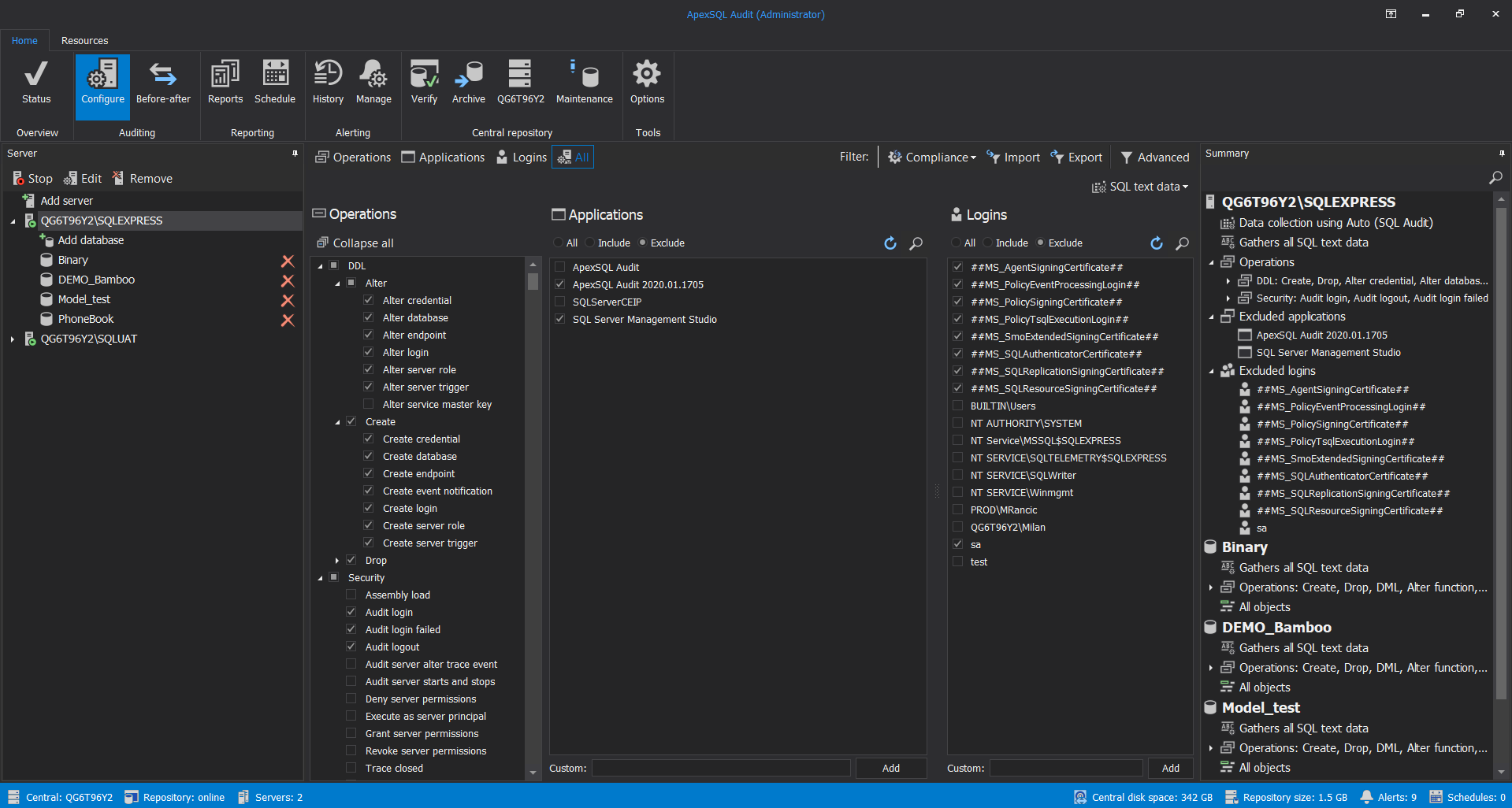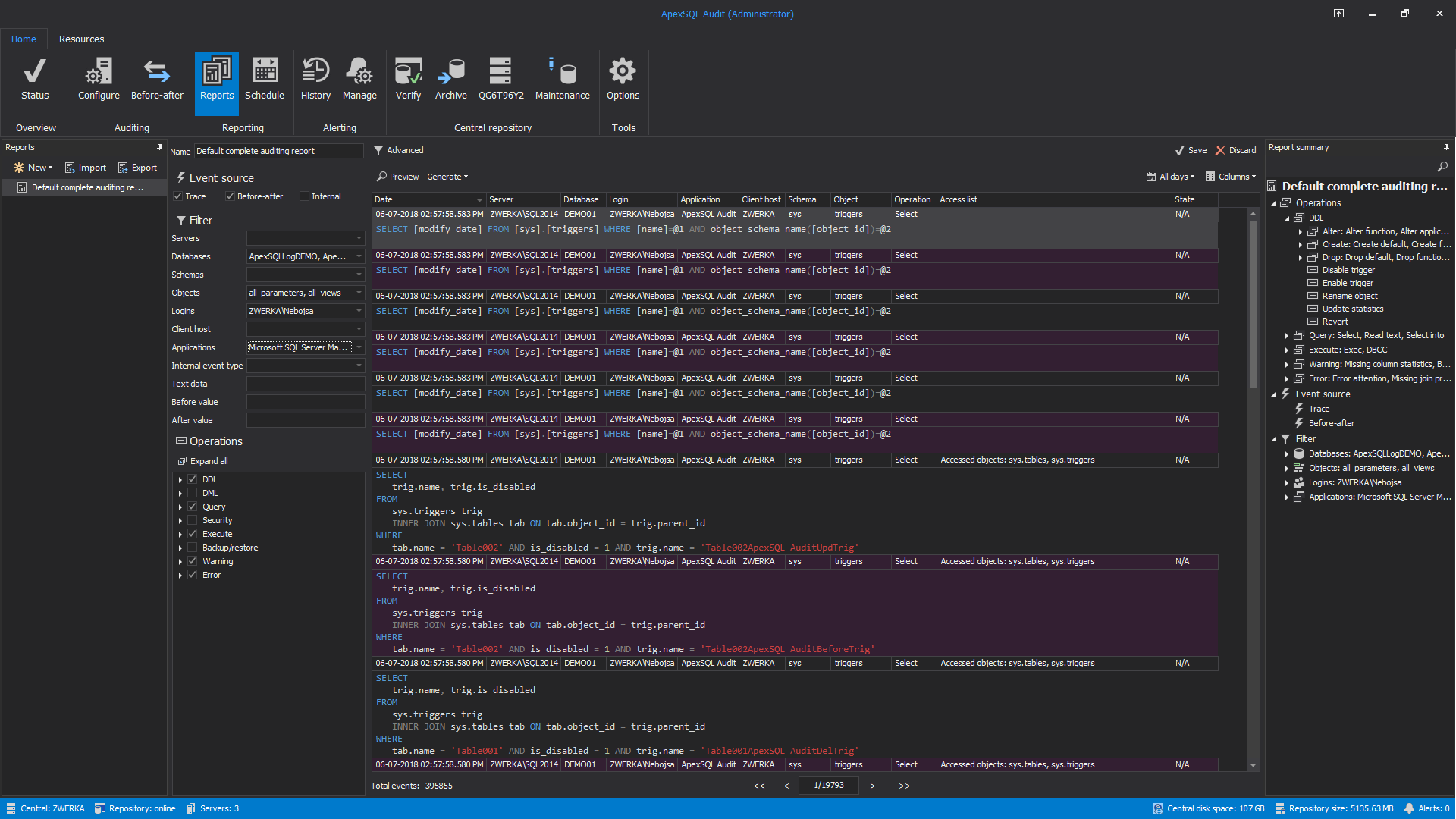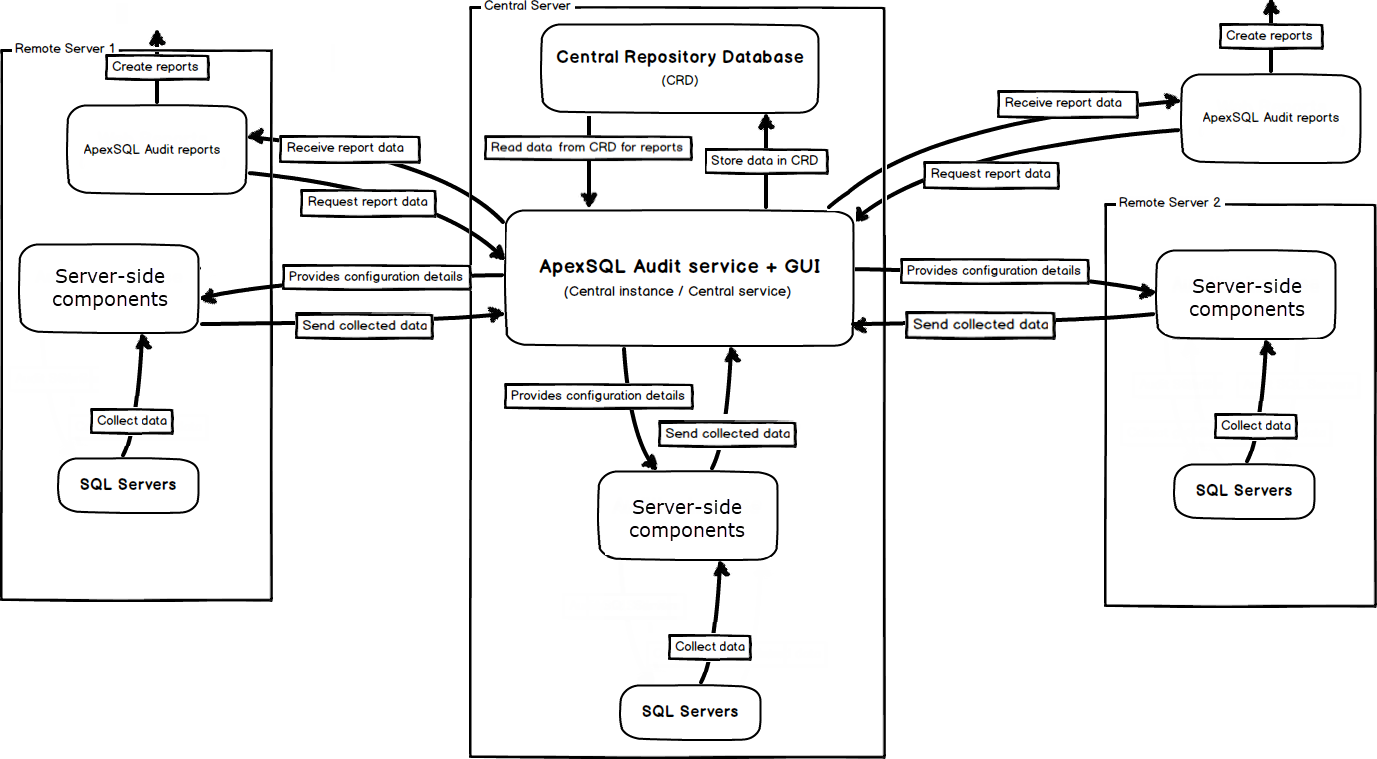Applies to
ApexSQL Audit
Summary
This article provides information about ApexSQL Audit installation terms and offers a visual overview of a network topography
Description
When an installation of ApexSQL Audit is initiated, three main options can be selected for an installation: Install ApexSQL Audit (main application), Install (standalone) ApexSQL Audit Main GUIm and Install server-side components. First option will install multiple components and is a mandatory installation (brain and heart of ApexSQL Audit). It includes Central (Windows) service, auditing (Windows) service, central repository database and GUI)
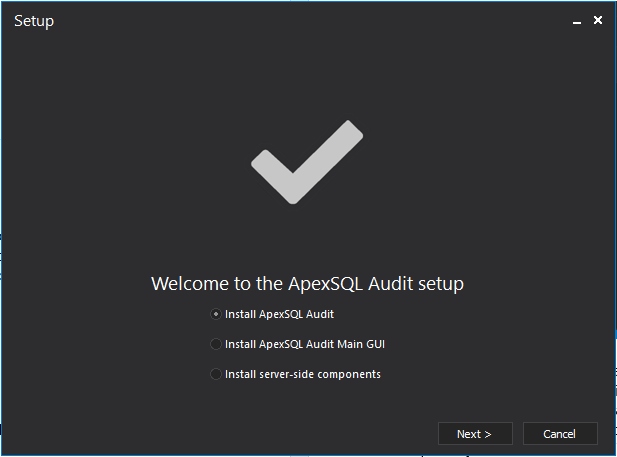
ApexSQL Audit main application
This is the core of ApexSQL Audit. It consists of four components:
User console (GUI), ApexSQL Audit service, Central repository database, Server-side components
-
User console is a GUI that is used to configure SQL Server instances auditing via basic and advanced auditing filters, create and manage alerting, create reports, as well as for auditing instances status information, overall configuration and maintenance tasks. Installation of the user console is a part of the complete application option along with the central repository database. Only one User console can be installed and used
- Central repository database is a SQL Server database that stores all the data collected by the data gathering service (Auditing instance), as well as the auditing configurations and exported reports files. Central repository database can be installed only on a SQL Server hosted by the same computer that hosts the ApexSQL Audit (central) service and application GUI. Central Repository Database can be archived at any point which results in creation of an archived database that can be used as a source for reports in the same way prior to archiving it.
-
ApexSQL Audit central instance (service) is a Windows service that manages and communicates with auditing services by providing them with configuration details. In addition, it is responsible for storing the collected data in the Central Repository Database. When installing the ApexSQL Audit service, windows administrator credentials must be provided
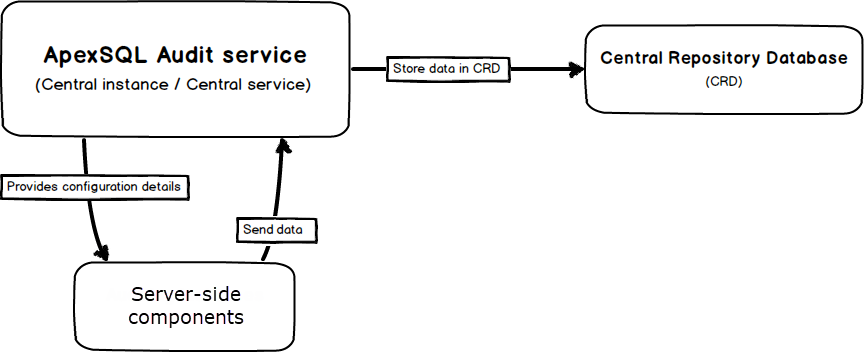
-
Server-side components is a Windows service that performs actual auditing of SQL Server instances. It also performs processing of the data gathered via auditing, as well as sending this data to the Central service which manages it further and stores it in the central repository database.
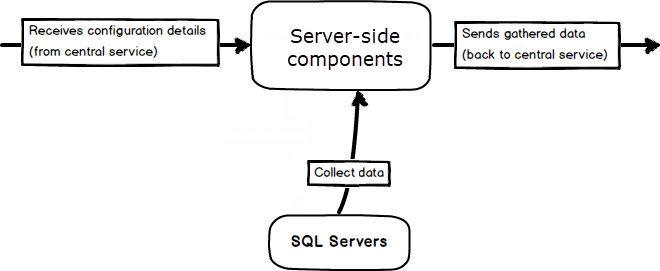
- Note: Server-side components service is a part of the Main application, and enables auditing of local SQL Servers. It can also be installed as a separate component on machines that host SQL Servers that are remote to the ApexSQL Auditing central
ApexSQL Audit (standalone) GUI
Standalone GUI is a component that allows access to run ApexSQL Audit application from any local or remote computer. It enables users to fully utilize all options existing in the ‘central’ GUI and any limitation will be dependent on the user role that is awarded to the Windows user running the standalone GUI. ApexSQL Audit user role can be created in the Application Options dialog.
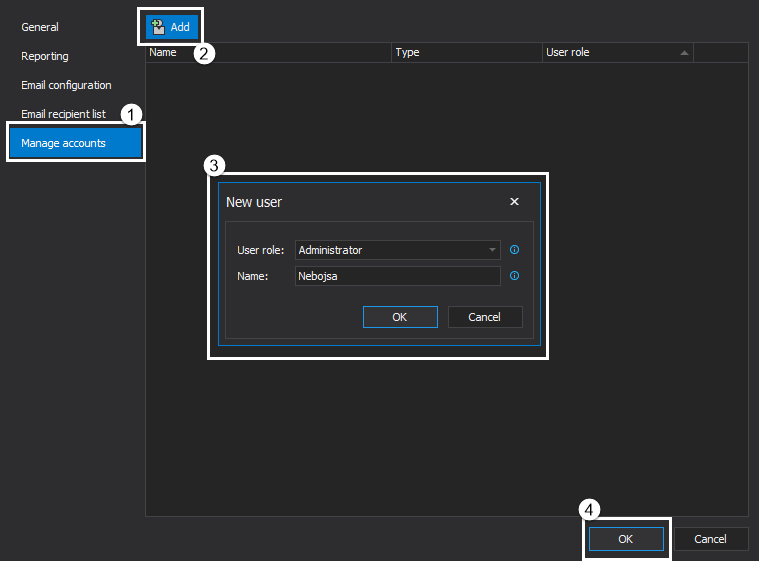

Folder for temporary files
This is the folder that stores all the data collected by the ApexSQL Audit. When ApexSQL Audit central instance stores this data in a central repository database or the Auditing instance sends data to the central instance, the folder content is cleared. If the communication between central instance, auditing instance, and central repository database is impossible, data will be stored in this temporary folder, in which case it may grow very large, depending on the amount of gathered data, so scheduled maintenance is recommended.
Full network topography
Here is an example of network topography with main application installed on a central server, and 2 remote servers with server-side components:
- The ApexSQL Audit service receives configuration details from the GUI
- The ApexSQL Audit service sends appropriate configuration details to each server-side components (located on local and remote servers)
- Server-side components gather the data from specified SQL Servers, process it and send it back to ApexSQL Audit service
- The central service stores data to the Central Repository Database
- The ApexSQL Audit reporting module extracts the data from central repository database and create reports
Useful link



